 Your new post is loading...
 Your new post is loading...
The price of cryptocurrency Ethereum dropped dramatically following news of its creator’s death. One problem: he wasn’t dead. A post on 4Chain claimed Vitalik Buterin — creator of blockchain technology Ethereum and currency Ether — died in a fatal car accident. Following news of what was later confirmed to be a hoax, the price of Ether went from $317 to $286 in moments, before bottoming out at around $216. Buterin dispelled any notion he was dead with a selfie. In it, he’s holding up blockchain-based data mined from days after his “death,” to prove was around. Still, this wiped out about $4 billion in Ethereum’s market value. Ether has since recovered — it was trading at around $300 at the time of writing. While this was likely not the sole reason for the drop, it certainly didn’t help....
2016 saw its fair share of corporate public-relations mishaps, but some were more cringeworthy than others. To be sure, the PR crises in certain cases weren't all that bad compared with the serious business missteps that precipitated a few of them, but the fact remains that there is always a better and a worse way to talk to customers and the public when something's gone wrong. These were three of the year's most egregious gaffes, and what companies can learn from them heading into 2017
The Samsung Galaxy Note 7 debacle is a master class in how not to handle a crisis. Much will be investigated in the months ahead. But what I find particularly interesting is how Samsung communicated what was happening at each stage of the crisis.
This weekend, the US DOT banned the Galaxy Note 7 on all US flights, categorizing the phones as “forbidden hazardous material.” It doesn’t get much clearer than that. Yet, just a few days earlier, Samsung portrayed the situation as “temporarily adjusting the production schedule to ensure quality and safety matters.”
The gap between “forbidden hazardous material” and “temporarily adjusting the production schedule” is a massive chasm. A few weeks earlier, Samsung similarly described a “global product recall” as an “exchange program.”...
No matter how secure and well-placed a brand appears to be, the danger of an online reputation crisis is always lurking. The open nature of modern day communication channels, like blogs, social networks and review sites, means that one bad customer experience or a small lapse in service standards can quickly damage a brand’s reputation. Negative experiences shared more often Research shows that consumers are much more likely to share negative experiences on social networks and other public platforms. A damaged online image can have severe effects on a brand’s value and business performance. A study by Deloitte shows that nearly 41% of companies that experience a negative reputation event reported loss of brand value and revenue....
Loyalty is not a common resolution to crisis situations, but it should be and likely will become, as organizations realize the immediate value of the customer information loyalty programs provide. In a crisis, such insights could make the difference between quarterly losses or gains. “The only way they can restore their customers’ loyalty is having that data and maintaining that data and then responding to the consumer in any way possible to make amends,” said Britt Beemer, founder of America’s Research Group, a customer behavior firm that has performed research for at least 30 companies in crisis. “There are a lot of things you can do to win.” Many companies rely on their PR teams to lift them from a public black eye, but fewer take full advantage of the resources that exist in their loyalty marketing teams. Indeed, rewards programs can often times be sub-optimized to enhance overall business results, be it in a crisis or day-to-day operations. We spoke with several experts in crisis communications about how to use loyalty to regroup and recover from a potential public relations crisis. Following is their advice....
In September 2015 the Environmental Protection Agency found that many Volkswagen cars sold in the United States were equipped with software that could falsely improve the performance of diesel engines on emissions tests. This cheating was subsequently acknowledged by the car maker.Among the many issues at stake for the company was one of public perception. Anecdotal evidencate at the time of the incident suggested irreparable harm to the Volkswagen brand. So could Volkswagen recover in the short term in this regard? And, the broader question, how can you measure brand perception in times of scandal, particularly in an era where social media can cause negative news to proliferate and reverberate over time? In the absence of direct empirical evidence, we wanted to find a way to tackle this important issue. We began our research with some key questions: How does social media sentiment change as a consequence of a public relations crisis? How does the public react to recovery efforts initiated by the company? How do topics of conversation shift as a consequence of a brand scandal and subsequent recovery efforts?...
It’s open season on Delta’s handling of the PR crises following its cancellation of more flights this morning on top of more than 1,800 yesterday and Monday after a computer problem in Atlanta stranded passengers around the world. Consider the four-word lede on the AP’s Scott Mayerowitz’ story: “We don’t cancel flights.” The next graf takes down that bit of hubris quicker than a glitch in a power control module can make a finely tuned system go kaflooey. “That’s been the message for the past two years from Delta Air Lines,” he writes. “Double-decker buses roamed the streets of New York, wrapped in ads proclaiming ‘canceling cancellations.’ Delta executives boasted about the number of days without a single flight scrapped.” Mayerowitz posits that the cancellations and delays, coupled with its own delay in explaining what really happened, “threatens to wipe away all that trust that Delta has worked to build” and has allowed it to proudly get 110 cents for every dollar charged by its competitors. That’s tempered, however, by S&P Global Market Intelligence’s Jim Corridore telling him the airline might “get a pass” if the incident proves isolated....
What's a little e coli among friends? That's the question US fast-casual dining chain Chipotle will soon be asking its best customers. After publicly eschewing the idea of launching a customer loyalty programme last year, Chipotle executives said on an earnings call last week that they aim to stem the flood of frequent diners abandoning the chain with - wait for it - a loyalty programme. Though the programme is likely to be temporary, Chipotle hopes it will reignite customer passion for bowls and burritos. The problem: Chipotle executives still seem to display a fundamental misunderstanding of the purpose of loyalty programmes.
The announcement was one of the only positives in an earnings call that can only be described as apocalyptic: same store sales fell nearly 30% in the first quarter of 2016 and the company posted a net loss of $26.4 million. The company has tried everything to pull out of the free fall: giving away millions of free burritos, BOGO offers, national advertising campaigns; nothing has worked. Money quote from reporter Virginia Chamlee over at eater.com:
"The aim is to target the most loyal Chipotle consumer — i.e. the one who visits 25 or more times per year. The company saw the largest declines among its top loyal (25+ visits a year) and its 'light' consumers (those that visit two to five times per year). Noting the decline in visits amongst its once most-loyal customers, [Chief Marketing and Development Officer Mark] Crumpacker said the company would love to get that 'habit' back up. "We do believe it's beneficial to us to get people back in the habit of visiting Chipotle [as often as they used to]."...
In April 2013, Vani Hari, activist and author of the blog Food Babe, petitioned Kraft to remove from their products the petroleum-based dyes that have been linked to ADHD and require a warning label in the European Union. A spokesperson for Kraft responded only that Kraft was following the FDA guidelines for what could and could not be in their products. The following month, Hari posted a hoax video showing a warning label on Kraft Macaroni and Cheese in a U.K. grocery. Hari then used the video to spur her followers and those of other activist groups into hijacking Kraft’s Facebook page. This study examines the impact of the video hoax and a growing trend of activists using the target organization’s social media sites to propagate campaign messages opposing the target organization’s practices. Method The websites and blogs of Kraft and Food Babe were examined to identify official comments regarding the controversy. Media coverage of the case was then collected via a Google News search and examined to create a case timeline and narrative. An interview was conducted with Hari and a Kraft spokesperson provided statements via email. User generated comments added under Kraft’s posts on their Macaroni and Cheese Facebook page from May 28 to June 15, 2013 were collected and coded as either positive/neutral or negative....
One of the trickiest challenges you will ever face when launching and growing your business is doing your public relations right. In its most generic terms, public relations involves activities that promote a positive image and foster goodwill in order to increase sales while conveying the right message. Reputation is everything for a brand and PR campaigns play important role in improving the brand value. Other advantages include:Improve engagement and image building. Reaching new target markets sounds great, doesn’t it? But one wrong step and you are likely to lose it all....
Every publicist feels a combination of schadenfreude and cold-sweat relief upon reading about a crisis involving someone else’s client. And is it me, or does it seem that entertainment publicists have an extra helping of these opportunities? Whether it’s due to naughty personal behavior or corporate shenanigans, we all get our chance at crisis management at some point. This little multiple-choice quiz based on hypothetical scenarios (some of which may or may not bear a resemblance to real-life episodes) can help us all keep our skills sharp.
Two months after The New York Times‘ devastating takedown of Amazon’s culture, Amazon fired back. Where’s the whole truth here?
Where’s the whole truth here? There is none. Because by definition, stories always leave out more than they include.
As briefly as possible, here’s what happened. On August 15, the Times wrote about Amazon’s “bruising workplace.” Jeff Bezos emailed his employees a non-denial denial of the story. Two months passed. Amazon PR head (and former Obama press secretary) Jay Carney ripped the article in a post on Medium. The executive editor of the Times, Dean Baquet, responded. Carney rebutted. Finally — well, finally is a word I can’t really use here, but anyway, two other Times reporters published a story about the fight.
As I attempted to retrieve the truth from this food fight, this is what became clear. There is none. Because by definition, stories always leave out more than they include.
Whether it is fair or not, when your business is tweeting during a major negative news event, offense can come quickly.It’s important for social media managers to have a pulse on these events, and a plan in place to pause your scheduled content so at not to seem “out of touch” or insensitive to your audience when earth rattling news occurs.
Here are five considerations to make when a story breaks...
|
Should executives respond when a tweet or unexpected event touches their business or rouses their employees and customers? There are risks and rewards to CEO activism. Weber Shandwick, where I serve as chief reputation officer, and KRC Research surveyed 1,050 senior executives and 2,100 consumers across 21 markets worldwide to find out what people expect from corporate brands. Our research shows that the two biggest factors that influence respondents’ opinions about companies are what customers say about them (88%) and how they react in crisis (85%). In fact, how a company responds to a controversy, including how quickly, is more important in driving public perception about the company than what is said about that company in the media (76%), by employees (76%), on the company’s website (68%), by spokespeople (61%), or in the company’s advertising (61%)....
Despite the enormous value social media yield governments in communicating with citizens, there is scant research on the extent to which local governments are actually using social media for crisis communication efforts. As local governments continue to face diminishing budgets stretched time, and human, and fiscal resources even for the management of daily operations, it is imperative to reveal how social media can maximize efficiency in crisis management. In addition, given the extraordinary growth in social media use over the past few years, it is also important to evaluate if and how governments are using this technology to communicate with publics during crisis and incorporating it into their crisis communication plans.
Using survey data collected from more than 300 local government officials from municipalities across the United States, this study examined social media use in a relatively unexplored context, local governments. It specifically addressed the adoption and use of social media tools for crisis communication and social media’s part in managing a crisis. Results indicate the extent of social media use, but not the number of tools used, is positively associated with local city officials’ assessments of their ability to control a crisis situation as well as their overall evaluations of the strength of their responses.
IAn instant is all it takes to threaten your business's sterling reputation online. You might have had an off day or the misfortune of dealing with an ornery customer, but it's almost inevitable that you'll come face to face with a negative online review at some point in your career. But, as Adrienne Weissman, CMO at G2 Crowd, recently pointed out, negative reviews aren't all bad. Some 70% of Americans read reviews before making a purchase, and those who seek out negative reviews tend to be more engaged and are 67% more likely to make a purchase. Plus, 68% of people trust a company more when their reviews are a mix of good and bad. Of course, the key to making the best of a bad review lies largely in your response. That means you need to be able to find reviews (both good and bad) as they pop up. That's definitely more social media monitoring than one person can handle... And that's where reputation management tools come in. The following five reputation management tools are some of the best on the market for tracking mentions, discovering influencers, and managing online reviews as they happen....
Donald Trump made piggish comments about women to Billy Bush, the cohost of Access Hollywood, in 2005. NBC released the video yesterday. The video makes clear that, at least in 2005, Trump considered bedding women as sort of a video game, one he plays to win with wealth and power. As Republicans began to distance themselves from the comments — and some from Trump — Trump apologized. His apology is a case study in how not to apologize. Here are some qualities of sincere apologies. - You take responsibility for what you did. - You are specific. - You don’t talk about how you got caught and whether that is fair. - You apologize directly to the people you hurt .- You find or offer ways to make amends. - You don’t justify why what you did is ok. - You don’t go off topic to avoid talking about what happened. Trump’s apology fails on every single element....
It was late morning on Friday, October 16, when Elizabeth Holmes realized that she had no other choice. She finally had to address her employees at Theranos, the blood-testing start-up that she had founded as a 19-year-old Stanford dropout, which was now valued at some $9 billion. Two days earlier, a damning report published in The Wall Street Journal had alleged that the company was, in effect, a sham—that its vaunted core technology was actually faulty and that Theranos administered almost all of its blood tests using competitors’ equipment.
The article created tremors throughout Silicon Valley, where Holmes, the world’s youngest self-made female billionaire, had become a near universally praised figure. Curiosity about the veracity of the Journal story was also bubbling throughout the company’s mustard-and-green Palo Alto headquarters, which was nearing the end of a $6.7 million renovation. Everyone at Theranos, from its scientists to its marketers, wondered what to make of it all....
Take 2010, when BP was confronted with one of the biggest oil spills in history. It appeared that the organization waited to reveal all the facts until they knew that the spill had become unstoppable. Or 2015, when the U.S. Environmental Protection Agency and the California Air Resources Board uncovered widespread cheating by Volkswagen on emissions standards – something Michael Horn, president and CEO of Volkswagen America, was alerted to a year earlier but remained silent. Even when the EPA confronted the company with their findings, Volkwagen missed the opportunity to communicate first. And more recently, The Wall Street Journal revealed a culture of secrecy at blood-testing start-up Theranos and questioned the effectiveness of the technology driving their operation, leading to a federal investigation.
In each case, the organization failed to self-disclose a crisis, and as a result, each faced enormous negative publicity that continues to draw critical attention from a broad public. Even Hollywood is interested: movies have been made, or are in the works, about all three scandals. The longstanding impact of a failure to acknowledge a problem cannot be overstated.
How should companies handle a crisis differently? Our research focuses on an alternative approach, one that is referred to as “stealing thunder.” It involves self-disclosing crises and major issues before media gets hold of the story. Earlier studies on stealing thunder have found that self-disclosing organizational crises increases the credibility of organizational spokespersons. When an organization breaks the news about incriminating events, these problems will also appear less severe. In addition, organizations that steal thunder are considered more reliable and consumers are more inclined to continue purchasing their products. Our recent study adds to these findings by examining if self-disclosing an organizational crisis may be as effective as it is because old news is considered no news. When self-disclosing incriminating information, individuals will perceive the subsequent negative publicity as old news, and hence, pay less attention to it....
When a company weathers a big change, it can be a test of leadership. Here's how what some CEOs who have been through it learned.
Sometimes it’s clear that the writing's on the wall for an organization: Things aren't going well. And during those times it’s even harder to communicate and lead.
Whether a company figures out its end vision is unattainable without the help of a deep-pocketed investor, or if it simply sees the financials and understands that the run rate is coming to a close, these are pivotal and emotional times for individuals at the top. More importantly, they're the hardest moments to strategize....
After talking with several business leaders who have steered companies during times of crisis, it’s clear that this is one of the most defining moments in an executive's career. When things are going swimmingly, a founder can gin up an image of success and determination. But when business goes south, that’s the real moment a leader needs to show his or her true colors....
The idea was cute. It always is. Ask members of the public to post there selfies with New York police officers, tag them with #myNYPD, and sing "Kumbayah" together. OK, that last part maybe not. The response was overwhelming -- overwhelmingly bad. Soon the hashtag was used as a bashtag....
No matter how well you prepare, sometimes things just go out of your control. It is not always possible to prevent a crisis. When it comes to PR campaigns, learning from your mistakes can be too costly. The trick should therefore be learning from other people’s mistakes.
According to the First Research study, the U.S. public relation industry is estimated to be at $10 billion, with above 7,000 U.S. firms in action in 2013. Still a large number of businesses suffer the adverse effects of PR disasters. Why is it so? Let’s take a take look at the factors that lead to PR disasters
Apple’s in a bind. The FBI wants them to crack the encryption on a San Bernardino terrorist’s iPhone. Apple believes that’s a dangerous precedent. Apple CEO Tim Cook’s open letter is breathtakingly simple and clear. Learn from it.
Here’s Apple’s logic: Breaking encryption creates a “back door.” Any such back door would inevitably get out. Thieves and foreign governments could use it. And then none of our data would be safe. Financial flows and everyday privacy use similar encryption — this precedent would threaten the same problems in those domains.
This is an unpopular position. Gloss over the details and it seems like Apple is protecting a terrorist. As Donald Trump, as always articulating the simplistic view, said, “Who do they think they are?”
In this situation, a press release would be useless. Instead, Tim Cook published an 1,100-word, plain-language open letter explaining the company’s position. I’ll take it apart and show you how and why it works. Excerpts below, with my comments in brackets....
Police departments around the country are using high-powered analytics software to comb social media and calculate threat levels for individual suspects before they are arrested, according to the Washington Post, which first reported the news.
The program, called “Beware,” uses addresses awaiting police response, finds the names of individuals who lives there, and checks their name against social media and other publicly available sources of information like property records and prior arrests to determine if they may pose a threat to responding officers. In one example cited by the software’s manufacturer, Intrado, an individual who is a military veteran with post-traumatic stress disorder and posted troubling comments on social media would raise a red flag....
To the public, Jared Fogle was a geekishly charming icon of personal dedication and accomplishment. But few knew the real Jared, a man frequently driven by his sexual obsession with underage girls.
Court documents filed by prosecutors Wednesday—and acknowledged as true by Fogle's attorney—detail years of sordid sexual activities by Fogle, who regularly spent time with prostitutes while traveling for work, in part as Subway's best-known pitchman.
Prosecutors say Fogle had an opportunity to do the right thing in 2011 when he learned his charitable foundation director was secretly filming children to create pornography. Instead, Fogle reportedly encouraged the exploitation, a decision that resulted in 11 other children being victimized, said Assistant U.S. Attorney Steven Debrota....
|



 Your new post is loading...
Your new post is loading...

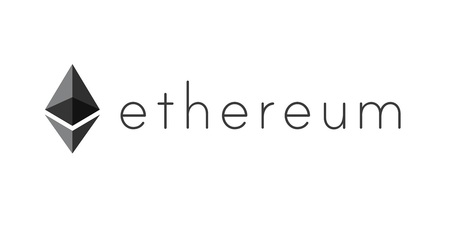



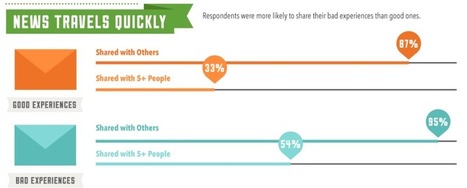

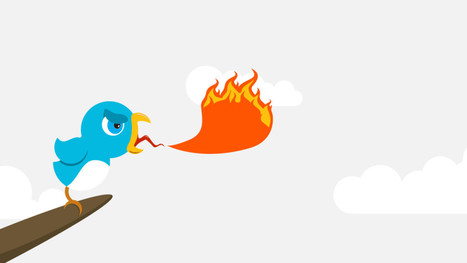

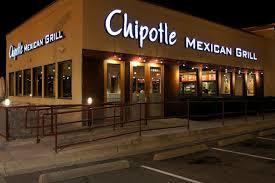

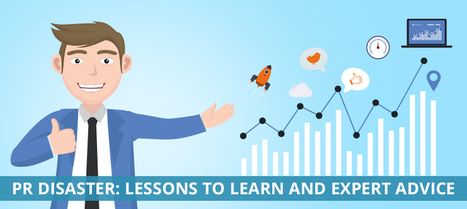



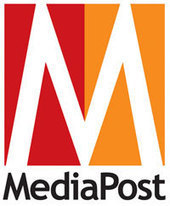
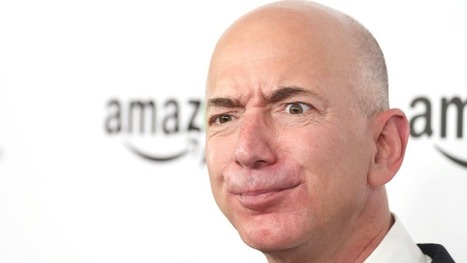
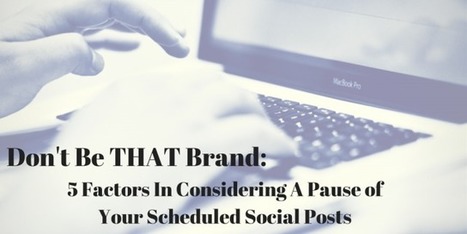

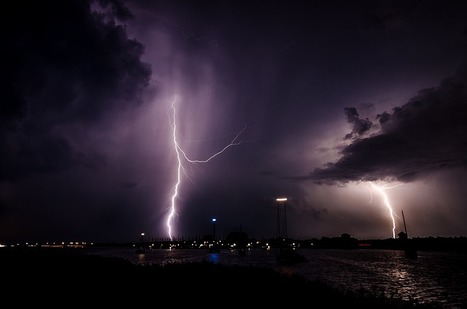





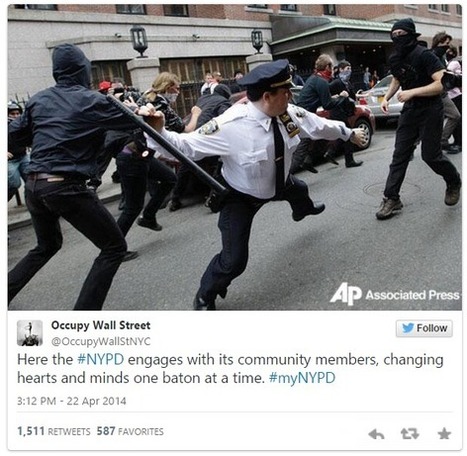


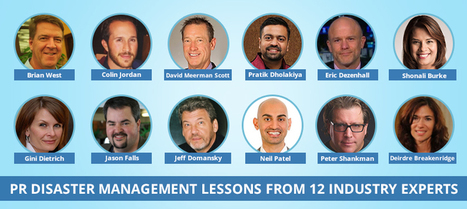
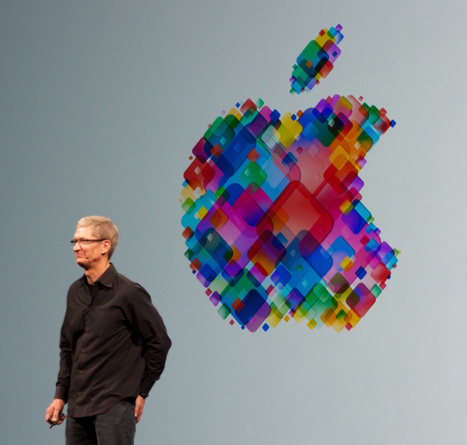


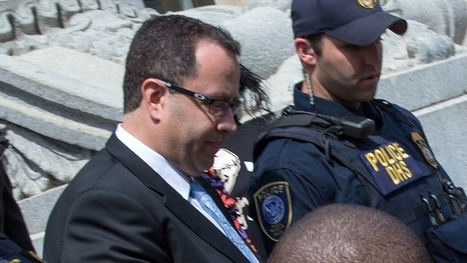





A case in crisis PR and the challenges of social media.